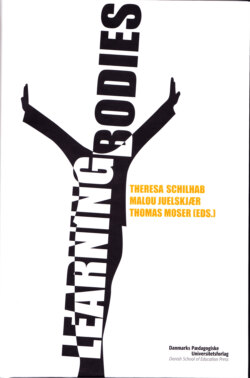Читать книгу Learning Bodies - Группа авторов - Страница 30
На сайте Литреса книга снята с продажи.
How do we gain access to first-person accounts?
ОглавлениеThere are certain difficulties in gaining access to first-person accounts, which are – as described – often pre-reflective, body-anchored and part of our tacit knowledge (Polanyi 1966). We know how things work and how to proceed, but the felt sense of our actions and of our relationship to the world we live in is initially pre-linguistic or non-discursive. At its origin, the first-person perspective is simply given and anchored in the lived body and in the situation in which the person is embedded. Personal accounts and self-experiences are bodily based and always connected to practice. Here, the person and the environment are interwoven. In the normal flow of life, the person often expresses his/her relatedness to the environment through actions, which are often exclusively based on practical intentionality, on a knowing-how.
But as soon as the individual is “confronted” with a second-person perspective – a totally normal situation in our social life, for example, at work, in school, communication, sport or therapy – the individual’s practice – at first pre-reflective and habitual – is and has to be coordinated with social others who are involved in the setting. In many everyday life and working situations, being in practice, cooperating with each other and finding words for one’s thoughts, feeling, ideas, strategies etc. go mostly hand in hand. Lave and Wenger (1991) speak about situated learning in a community of practice, a concept which will be presented in more detail later in this chapter.
In a community of practice, words and oral accounts do not always need to be too specific, because they are embedded in practice itself. They are often only intelligible and meaningful while doing things in the community of practice. But there are situations (e.g., being interviewed, in teaching and teamwork) where it is beneficial or necessary that the first person perspective becomes articulated, explicit and discursive.
Despite the best intentions, it is often not easy to find the right words for our pre-conceptual and body-anchored experiences. Before these experiences or first-person accounts can be verbalized they have to go through a transformation process. In this process, the originally implicit meaning – evolving while being actively involved in the situation – becomes explicit or discursive (Stelter 2000). The following quote from Stevens (2000) describes the challenges and difficulties in communicating first-person experiential and implicit knowledge to another person:
If I wish to communicate to you an experience I have had, I can only do it through some system of symbolic forms, probably words. But, there are serious difficulties here for a listener who wants to understand what I am expressing. It is not a simple question of getting the record of the actual words I use or have in mind. It is about knowing what meanings they signify (i.e., about the meaning systems they relate to). One problem here is that communication depends on the experiencers’ ability to express themselves: how articulate, how skilled and expressive they are in the use of language. Another is that the words used relate to a diffuse network of semantic assemblies both for the speaker and the listener: even if we attempt to articulate a particular cluster, where do we begin and stop? Thirdly, we depend on the researcher’s or listener’s ability to reconstruct or interpret what is heard. We share understanding with the speaker only in so far as we have equivalent semantic systems (and ones related to similar linguistic tags) which can be stimulated in us. (Stevens 2000, p. 115).
Certainly, there are these challenges. Some of the prejudices and subsequent difficulties of giving voice to embodied experiences are probably the result of a latent rationalism in our culture and society and of a continuous notion of the human body as a kind of machine and the brain as a kind of computer. Furthermore, we can find a number of examples in several scientific disciplines against a phenomenological and experientially based understanding of the body (see e.g. Fuchs 2000). But there are also concrete procedures that open up for in-depth work with the personal experience and first-person accounts. Earlier in this contribution, Eugene Gendlin (1981, 1996, 1997), a phenomenologist and psychotherapist, was mentioned as the exponent of an experiential method which aims to overcome the obstacles described above. Gendlin’s approach builds a bridge from pre-conceptual and body-anchored experiencing over symbolizing towards verbalizing – a method he calls focusing (see also chapter 5 in this book).
